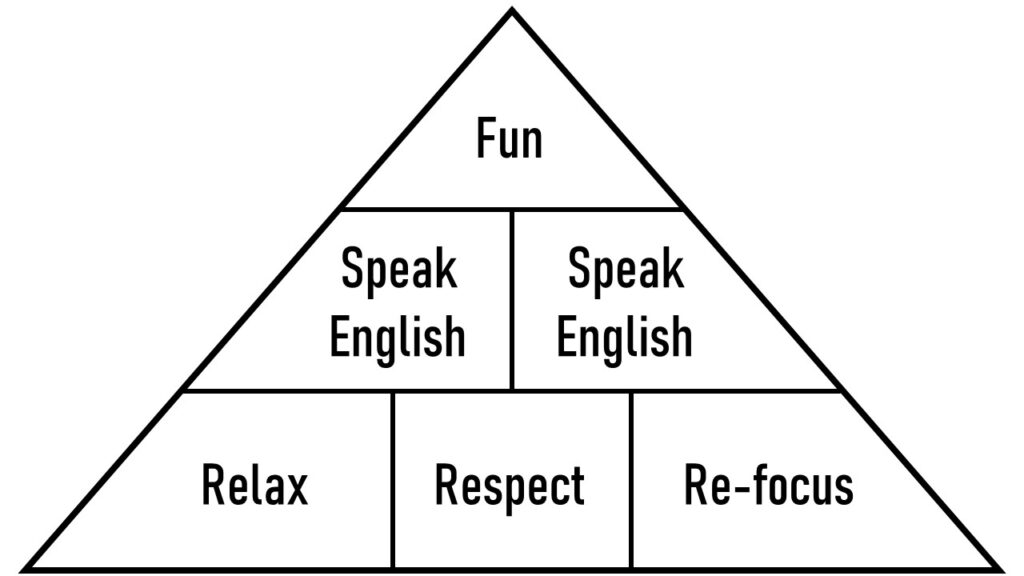Private EFL/ESL tutors for children are in high demand. Parents around the world want their kids to get a good grasp of English because it opens up so many opportunities for study and work.
But not all kids want to be there. While some of your young students will be self-motivated, many will attend classes at the behest of their parents/guardians. This can be a tough situation.
Fear not. In this article, I’m going to explain my way of teaching private EFL/ESL classes to children aged 8-12 that will result in your lessons being the highlight of their week. This guide is for individual students or groups of 6 or less. Larger groups require a different strategy which is outside the scope of this post.

I’ve taught English to hundreds of children since 2016. My current job is as a private tutor, and about half of my classes are with children aged 8-12. From this experience, I’ve learned what works and what doesn’t.
This article is part of my big series about how to become the best possible private EFL/ESL tutor.
Are you ready? Let’s go!
1. Learn about your students
This is a general rule for classes of any size, age group and subject. With kids, you need to find out three main things:
- The personality and energy level of your students.
- How good they are at English and what the aim of the class is.
- What things get them excited.
The best way to figure out these things is by performing a needs analysis. If you’re not sure what that means, you should definitely read my article explaining it by following the link: Needs Analysis for Private EFL/ESL Lessons: 12 step guide.
Some kids are shy and won’t speak much, while others spend the whole day bouncing off the walls. Most are somewhere in the middle. Finding out where your students lie on this spectrum will inform how you plan your lessons and how you set expectations (see step 2).
If possible, speak to their parents/guardians before starting the first class. They’ll be able to tell you what kind of behaviour to expect and how they react to certain situations.
They can also give you a good idea of what level of English they have. Do they need support to catch up in class? Or are they doing okay and want to get the best grades possible?

Parents may tell you what they want from the class. In my experience, they’re most often looking for a fun, dynamic way to practice English as a whole, with a focus on speaking. As I’m a native English speaker, they want their kids to listen to my pronunciation, learn things about my culture, and develop conversation skills.
Alternatively, it may be preparation for an exam. Typically, kids at this age aren’t required to take major external exams, although I often have kids aged 11-12 preparing for the Cambridge Preliminary test.
For a detailed look at how to prepare students for English exams, check out my article Getting EFL/ESL Exam Preparation Right: Tips for success
The final thing you want to know is what your students are interested in. Do they like superhero movies? Are they obsessed with a certain sport or hobby? What do they do at the weekends?
These things help you design interesting games and activities which children tailored to your student(s). With groups, you can’t always please everyone in every class, but you can definitely cover all their interests over a few sessions.
2. Establish expectations
The rules you set and the expectations you establish in the first class affect the success of the rest of your sessions. You have to get it right.
This is especially true with children at this age. If you don’t set and enforce clear boundaries, you’ll quickly lose control. But it’s not just about what they can’t do, but what things they should do to learn in the best way possible.
Don’t make the mistake of starting off strict and oppressive. You want them to know they’ll have a good time and will see great benefits from working hard, as long as they stay within the limits.
I created this Perfect Pyramid to help explain and visualise my expectations.

For more on how to set expectations and maintain them, as well as how to use the Perfect Pyramid in your first class, check out my guide How to Set Rules & Expectations in Private EFL/ESL Classes.
3. Create an engaging and supportive atmosphere
The best thing about private EFL/ESL classes is they don’t have to be like school.
Unfortunately, too many kids hate their time at school. They’re sat at a desk all day writing in their notebook, doing exams and getting shouted at by a teacher. Sound familiar? Don’t make your private classes like that.
Firstly, students learn more when they’re motivated. If kids don’t want to be in class, they’ll pay attention less and be more reluctant to engage in games and activities.
Secondly, private classes are optional. Sure, they might only be there because they’re being forced to, but if they hate it enough, they’ll complain to their parents to the point that the classes get cancelled.

In contrast, if children actively want to be in your classes, parents will be delighted to see them so interested.
However, there’s a huge warning here. Your classes are not just for kids to have fun. The main focus is to learn English.
This seems obvious, but it’s something I’ve let get out of control in the past. Sometimes you have to ensure learning happens, even if your students don’t like it, otherwise you’ll end up with kids who just want to mess about all the time.
The first three steps in this list can be put into practice in your first class with a new student or group. To find out more about how to get the first class right, read my article by clicking the link Acing Your First Private EFL/ESL Class: 9 Steps to Success
4. Manage energy levels
Kids aged 8-12 have a lot of energy. Personally, I love harnessing that energy and channelling it towards learning English.
However, they often struggle to control themselves when they get excited. This means things can quickly go off the rails if you’re not careful, and you end up with something that resembles a zoo more than it does an English class.
With an individual student, it’s easier to keep things settled, but with groups, it’s more of a challenge.
Being able to manage energy levels is a skill that takes time to learn. Here are some tips:
- Vary the excitement of activities. Don’t spend the whole class playing games that involves running, shouting or dancing. Plan some time for calmer work.
- Use your voice and body language to indicate what energy level you expect. Talking quietly and softly tends to calm people down, while raising your voice and acting excited will get kids following suit.
- Observe your students and learn their signs. Kids don’t hide their feelings very well, so it’s pretty easy to see if they’re getting agitated while you’re doing a more relaxed activity. If you see this, consider a quick 5 minute game to let off some steam before returning to what you were doing.
5. Follow the 10-20-20-10 lesson plan structure
The 10-20-20-10 structure is my favourite way of laying out lessons. Here’s a brief look at how it works:
10 – Start with a warmup activity. For me, this is usually talking about what happened in their lives since the last class. It can also be a game to review what you learned in the previous session.
20 – This is where you can teach new things. New vocab, grammar structures, learning how to ask different questions, etc. It’s where you have the most input as a teacher.

20 – By this time, kids are often ready to get up and about. I’ll plan an exciting game or activity that practices what we learned in the previous 20 minutes
10 – I like to finish classes with something fun and energetic. End on a high.
The times don’t have to be exact, they’re just a rough guide. In fact, it’s best to be flexible. You can never know for sure how long each activity will take, so always have a backup plan.
I explain the 10-20-20-10 structure in much more detail in my article Principles of Designing Amazing Private EFL/ESL Lessons. Make sure to read that to understand the method in full.
6. Let kids talk about themselves
For the first ten minutes of every class, I let my kids talk. This is usually asking them what happened in their lives since our last class – weekend trips, birthday celebrations, experiences at school, etc.
There are a few reasons why this works so well:
- Kids of this age love talking about themselves. I’ve had classes where children have spent 45 minutes talking about what they did in one week. You don’t get this from teenagers.
- It’s a routine. Starting the class in the same way every time makes kids feel comfortable because they know what to expect. It puts them in the mindset of learning English.
- They can build confidence in speaking and iron out errors. As the topic is mostly the same every week, students can hone their grammar and vocabulary by using it again and again.
While it’s a great start to the lesson, don’t force it. Sometimes kids won’t want to talk about their week (especially if it was a bad one), and pressing them to give more information feels like an interrogation.
Some weeks you might not get much, so have a quick warmup game as backup for when this happens.
7. Use Anki to practice vocabulary
In my opinion, vocabulary is the most important thing kids of this age should learn. Without words, they can’t talk. Sure, you can teach them the present perfect or the second conditional, but will they really know what they mean?
Getting correct pronunciation and the relationship between sounds and letters at an early stage sets the foundation for future success.
And the good thing is, you can learn vocab quickly and effectively.

I use the free app Anki to automate spaced repetition. Spaced repetition is where you repeatedly review a piece of information (in this case, a word) at different intervals depending on how well you can remember it.
For example, if you can’t recall the information, you repeat it in the next session. But if you get it right, the next time you repeat it will be in three of four sessions’ time. Get it right again, then it might be eight sessions before the next time it appears.
With Anki, you can use images and sounds, as well as testing spelling.
I have a weekly class with a group of three girls in this age group and we started with Anki five months ago. Since then, in 15 classes, spending about 15 minutes each time, they’ve learned 194 completely new words.
I’ve written extensively on how to teach vocabulary to EFL/ESL students. To learn more, I recommend you start with the big overview article: Best Method to Improve EFL/ESL Students’ Vocabulary. Or go straight to the post about Anki: Supercharge EFL/ESL Vocab With Spaced Repetition (Anki).
8. Use gamification for motivation in less exciting tasks
Drilling vocabulary isn’t the most exciting thing you can do in your private classes. Didn’t I say earlier to make your lessons fun?
Luckily, there’s a way you can make some of those repetitive, potentially boring activities more engaging for your students. The way to do this is with gamification.
Gamification is the use of game elements for educational purposes. Think points, prizes, trophies, leaderboards – the kind of thing you see in most successful video games.
Those games are designed to make meaningless tasks seem important. It’s actually quite scary how addictive some mobile games have become. People spend hours tending to their imaginary farm or moving bits of candy around a screen thanks to these clever strategies.

But that doesn’t mean it will all work in education. In fact, some gamification elements actively damage learning, so you have to be careful.
My approach is to use collaborative progression indicators. I avoid competition because it results in cheating and complaints of things being unfair. I also don’t award tangible prizes, because then kids won’t do anything for you unless you give them something in return.
I’ve created a fantastic method that avoids many of the pitfalls. Groups work as a team to earn points when they get vocabulary right in Anki. They progress through the levels and see how far they’ve come together.
Here’s a PDF of the scorecard I use to keep track of points.
If you’re thinking of using gamification in your lessons, make sure to get it right by reading my full article on the subject: Gamification in EFL/ESL: Guide to motivating students.
9. Be creative and flexible with games and activities
Every class is different. Each student has their own attitude to English, and each combination of kids in a group creates a different vibe. Knowing how to take advantage of that is key to success.
That means an activity that worked wonders with one group may fail terribly with another.
But if you take the activity and adapt it, anticipating how your students will engage with it, you can increase the chances of creating a positive impact.
For example, take the game Hot Potato. It’s a super simple game where you pass a “potato” (usually a ball) around a circle, but you can only pass it on if you say a word in a certain category, for example, animals. If you can’t think of a word or repeat one somebody already said, you get burned.
It’s a classic. I reckon every EFL/ESL teacher has used it with kids at some point. But it doesn’t always work as well as you’d hope.
Let’s take class A. They’re really shy and quiet. There are only two of them, so even if you take part as well, the circle of people is only three. With such a fast-paced game, there’s a lot of pressure to think quickly. Less confident students might get stressed and freeze.
Does that mean you shouldn’t play Hot Potato? No, but you should certainly change it. Perhaps lower the energy, play it sitting down, and give a bit more time to think. Perhaps let them write down some ideas beforehand so they don’t have to think quickly in the moment.

In contrast, let’s look at class B. It’s a group of 5 energetic kids who are prone to silliness. First of all, I’m not playing with a ball, because it’ll get thrown all over the place and we’ll spend more time chasing it around than actually playing the game. So we play with an imaginary ball.
But I don’t want to restrict their energy. If possible, I’d go outside and play there. I’d modify the rules so if you can’t think of a word and get burned, you lose a hand. Fail again, you lose another hand and have to keep the imaginary hot potato up with your knees, and then later bouncing it on your head.
It’s the same game, but in two totally different forms.
If you’re looking for great games for your private classes, I’ve got plenty of lists for you, complete with tips on how to get the best out of them. Check out:
9 High Energy EFL/ESL Games for Boosting Vocabulary
9 EFL/ESL 5 Minute Games Every Teacher Needs to Know
9 EFL/ESL Speaking Games & Activities Perfect for Beginners
Conclusion
The years before kids reach puberty are some of the best for learning English. Around the age of ten, I’ve found kids start to put the pieces together and realise how cool it is to speak a foreign language.
But these children can also be the most challenging. Their high energy levels and inability to control their emotions needs skillful management.
I hope you’ve found the 9 steps in this guide useful. There’s a lot to take in, and so many things require more attention than I can give them in this article alone, so make sure to check out the other guides on this site. And most of all, when teaching kids, remember to have fun!
Follow the links below to learn how to be the best private EFL/ESL tutor possible.
Ultimate Guide to Giving Great EFL/ESL Private Classes
Needs Analysis for Private EFL/ESL Lessons: 12 step guide
Principles of Designing Amazing Private EFL/ESL Lessons
Acing Your First Private EFL/ESL Class: 9 Steps to Success
Lesson Plans for First Private EFL/ESL Lesson (+ tips)
How to Set Rules & Expectations in Private EFL/ESL Classes
What to Do if Private EFL/ESL Students Won’t Participate
Getting EFL/ESL Exam Preparation Right: Tips for success
Give Amazing Private EFL/ESL Classes to Kids: 9 steps
7 Steps for Incredible Private EFL/ESL Conversation Classes
Teaching EFL/ESL Grammar: A guide for private tutors
5 Tips for Setting Homework in Private EFL/ESL Classes






